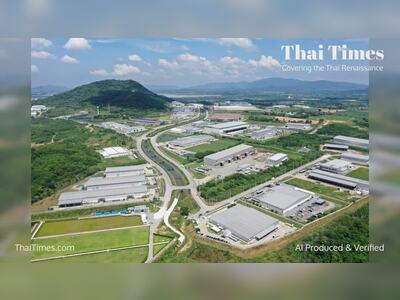Thailand's Restaurant Industry Faces Transformation Amid Economic Pressures
Major challenges and strategic opportunities identified as the landscape evolves in 2025.
Thailand's restaurant industry is experiencing a pivotal transformation in 2025, significantly influenced by economic fluctuations, increased operational costs, heightened competition, and rapidly changing consumer preferences.
Industry experts highlight the urgent need for restaurant operators to adapt their business models to navigate these challenges effectively.
Thanapong “Tor Penguin” Wongchinsri, the founder and CEO of marketing services specialist Penguin X Co., Ltd, has identified four major challenges facing restaurant operators today:
Economic Downturn: A decline in consumer purchasing power coupled with rising operational costs is straining profit margins and placing substantial pressure on businesses throughout the sector.
Surging Costs: Restaurant operators are contending with significant financial burdens, characterized by various cost increases.
Rents are reportedly 20% higher than pre-pandemic levels, the minimum daily wage has risen to 400 baht, raw material costs have surged by 35%, and delivery platform fees have escalated.
Intensified Competition: The restaurant landscape has become increasingly competitive, with over 700,000 establishments listed on popular delivery platforms such as LineMan, contributing to a saturated market.
Changing Consumer Behaviour: The influence of social media on dining choices has prompted a shift from traditional location-centric marketing strategies towards the necessity for strong brand building and effective online engagement.
To address these evolving challenges, Wongchinsri presents nine strategic trends that restaurant operators could adopt in 2025:
Small but Stylish: Emphasizing efficiency by maximizing sales per square meter, favoring smaller, unique outlets instead of large, expensive spaces.
Speciality Food Focus: Enhancing menus with detailed ingredient sourcing information to cater to discerning consumers who prioritize quality and provenance.
Tech-Driven Efficiency: Adopting automated ordering systems and chatbots to minimize labor costs and improve customer interactions.
Value-Added Presentation: Innovating product packaging and presentation to create a premium dining experience without incurring substantial additional costs.
Content Marketing Over Paid Ads: Transitioning from traditional advertising methods to engaging in organic content creation that resonates with target audiences.
Expanded Sales Channels: Diversifying revenue streams by providing ready-to-eat packaged meals, which mitigates challenges related to location constraints.
Local Authenticity: Leveraging local ingredients and culinary traditions to create distinctive dining experiences that resonate with both locals and tourists.
Affiliate Marketing: Encouraging customers to become brand advocates through structured affiliate marketing strategies.
Strategic Partnerships: Promoting collaboration among businesses to expand reach through joint promotions and events, transforming competition into opportunities for growth.
The restaurant sector in 2025 is poised for continued evolution, marked by relentless competition and rapid changes in consumer tastes.
By embracing these strategic trends—emphasizing smaller, stylish establishments, enhancing menu offerings, leveraging technology, and building robust brands—restaurants may navigate the intricate landscape and pursue growth amid prevailing economic challenges.
Industry experts highlight the urgent need for restaurant operators to adapt their business models to navigate these challenges effectively.
Thanapong “Tor Penguin” Wongchinsri, the founder and CEO of marketing services specialist Penguin X Co., Ltd, has identified four major challenges facing restaurant operators today:
Economic Downturn: A decline in consumer purchasing power coupled with rising operational costs is straining profit margins and placing substantial pressure on businesses throughout the sector.
Surging Costs: Restaurant operators are contending with significant financial burdens, characterized by various cost increases.
Rents are reportedly 20% higher than pre-pandemic levels, the minimum daily wage has risen to 400 baht, raw material costs have surged by 35%, and delivery platform fees have escalated.
Intensified Competition: The restaurant landscape has become increasingly competitive, with over 700,000 establishments listed on popular delivery platforms such as LineMan, contributing to a saturated market.
Changing Consumer Behaviour: The influence of social media on dining choices has prompted a shift from traditional location-centric marketing strategies towards the necessity for strong brand building and effective online engagement.
To address these evolving challenges, Wongchinsri presents nine strategic trends that restaurant operators could adopt in 2025:
Small but Stylish: Emphasizing efficiency by maximizing sales per square meter, favoring smaller, unique outlets instead of large, expensive spaces.
Speciality Food Focus: Enhancing menus with detailed ingredient sourcing information to cater to discerning consumers who prioritize quality and provenance.
Tech-Driven Efficiency: Adopting automated ordering systems and chatbots to minimize labor costs and improve customer interactions.
Value-Added Presentation: Innovating product packaging and presentation to create a premium dining experience without incurring substantial additional costs.
Content Marketing Over Paid Ads: Transitioning from traditional advertising methods to engaging in organic content creation that resonates with target audiences.
Expanded Sales Channels: Diversifying revenue streams by providing ready-to-eat packaged meals, which mitigates challenges related to location constraints.
Local Authenticity: Leveraging local ingredients and culinary traditions to create distinctive dining experiences that resonate with both locals and tourists.
Affiliate Marketing: Encouraging customers to become brand advocates through structured affiliate marketing strategies.
Strategic Partnerships: Promoting collaboration among businesses to expand reach through joint promotions and events, transforming competition into opportunities for growth.
The restaurant sector in 2025 is poised for continued evolution, marked by relentless competition and rapid changes in consumer tastes.
By embracing these strategic trends—emphasizing smaller, stylish establishments, enhancing menu offerings, leveraging technology, and building robust brands—restaurants may navigate the intricate landscape and pursue growth amid prevailing economic challenges.











